|
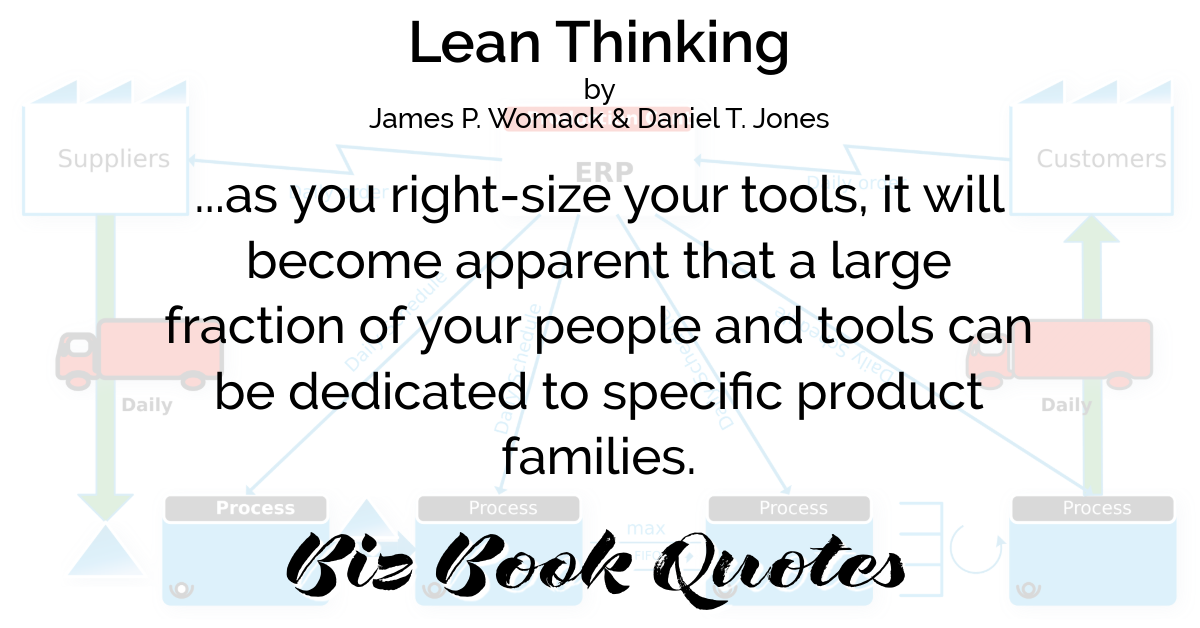
|
Lean Thinking:
…as you right-size your tools, it will become apparent that a large fraction of your people and tools can be dedicated to specific product families.
|
256 |
|
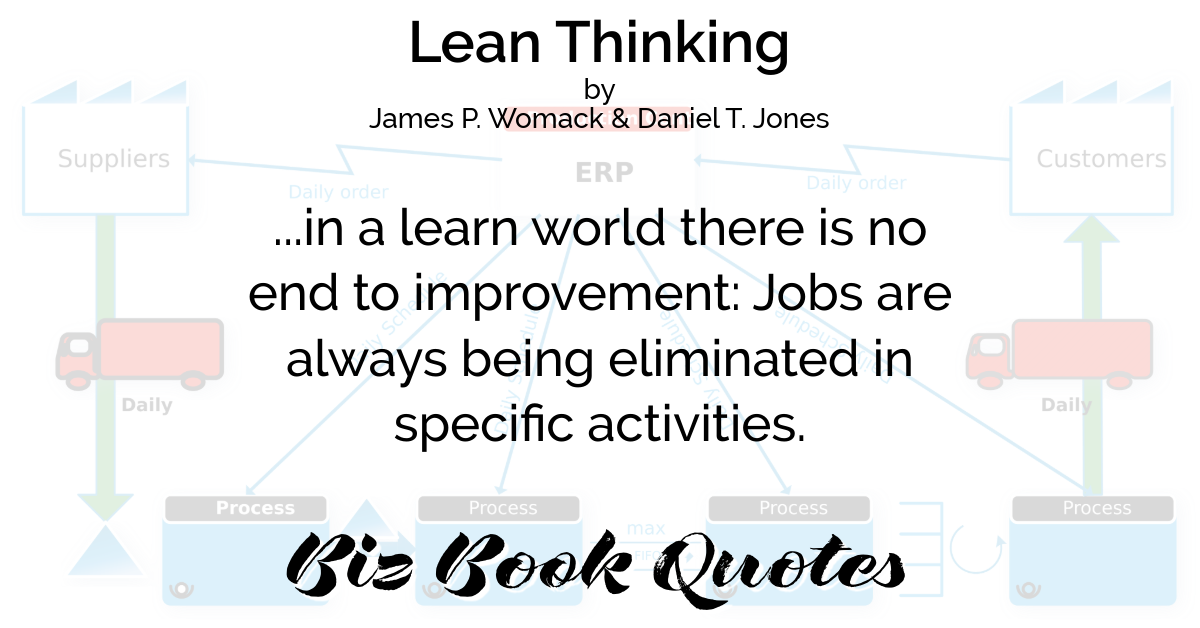
|
Lean Thinking:
…in a learn world there is no end to improvement: Jobs are always being eliminated in specific activities.
|
258 |
|
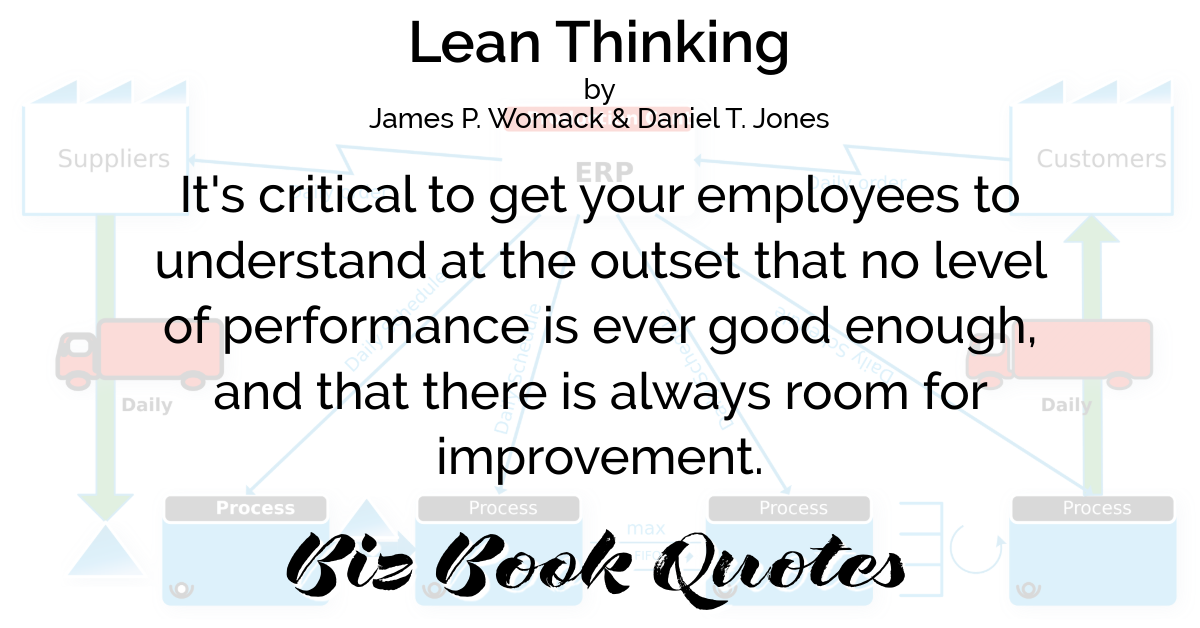
|
Lean Thinking:
It’s critical to get your employees to understand at the outset that no level of performance is ever good enough, and that there is always room for improvement.
|
260 |
|
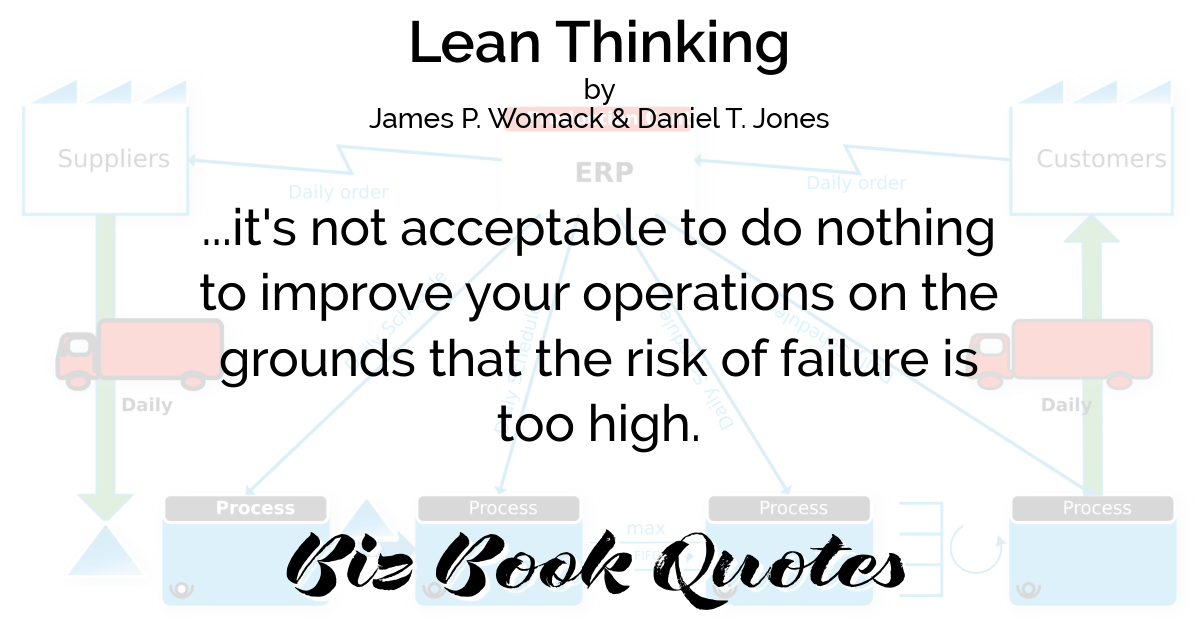
|
Lean Thinking:
…it’s not acceptable to do nothing to improve your operations on the grounds that the risk of failure is too high.
|
261 |
|
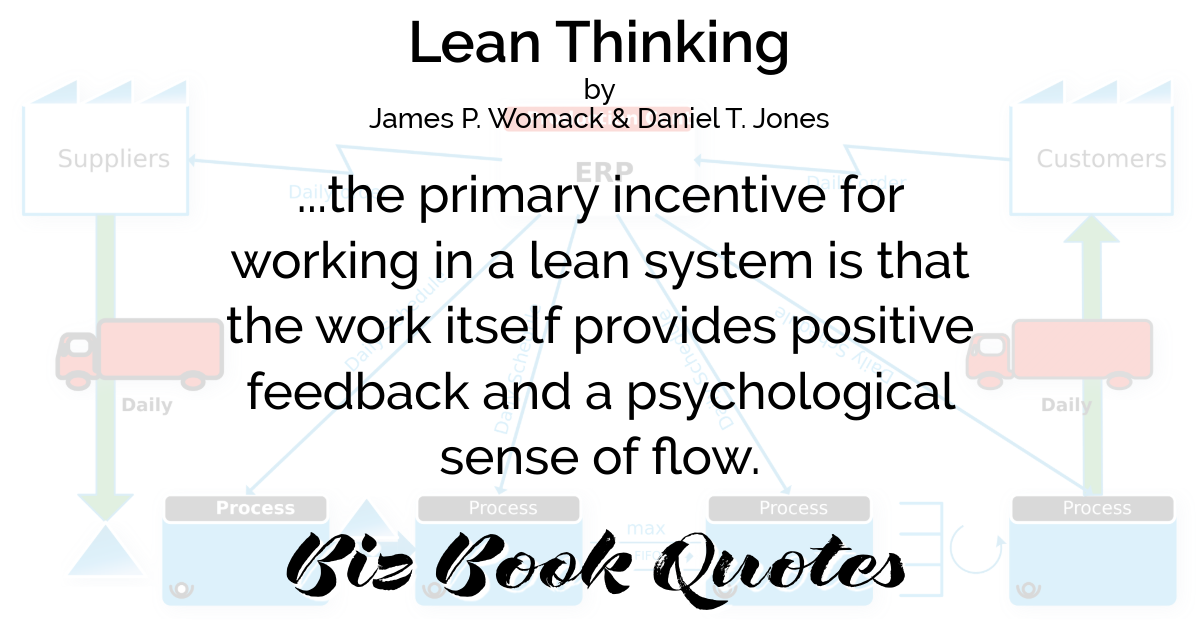
|
Lean Thinking:
…the primary incentive for working in a lean system is that the work itself provides positive feedback and a psychological sense of flow.
|
263 |
|
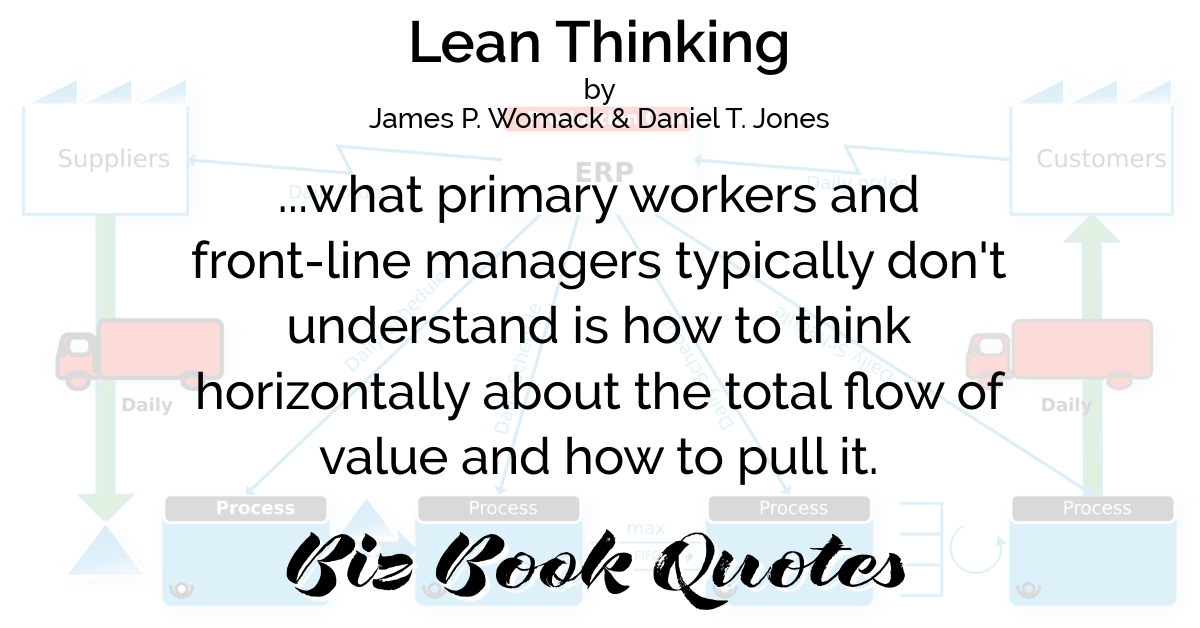
|
Lean Thinking:
…what primary workers and front-line managers typically don’t understand is how to think horizontally about the total flow of value and how to pull it.
|
264 |
|
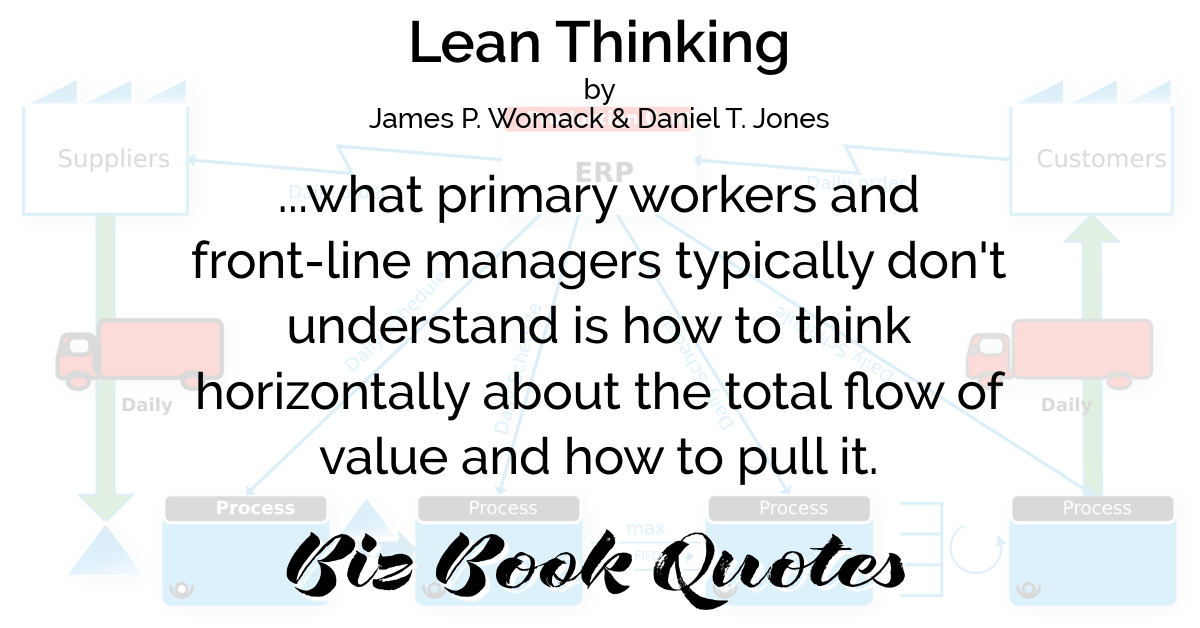
|
Lean Thinking:
Over time, the investment in training can only be directly connected to the resulting improvements in the business.
|
264 |
|
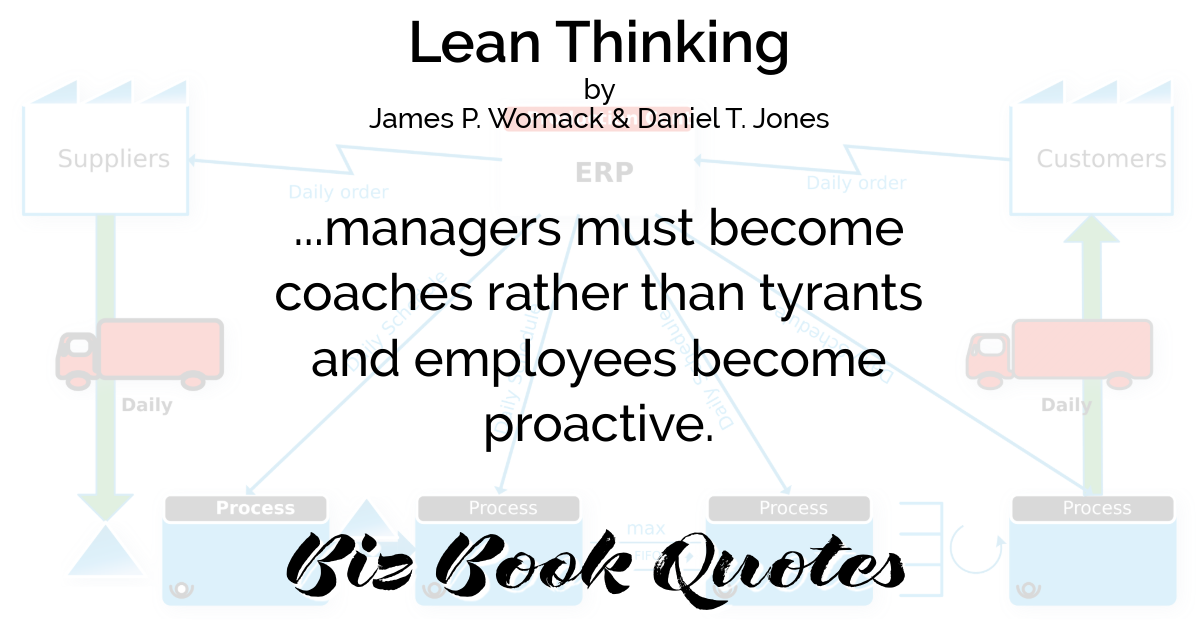
|
Lean Thinking:
…managers must become coaches rather than tyrants and employees become proactive.
|
269 |
|
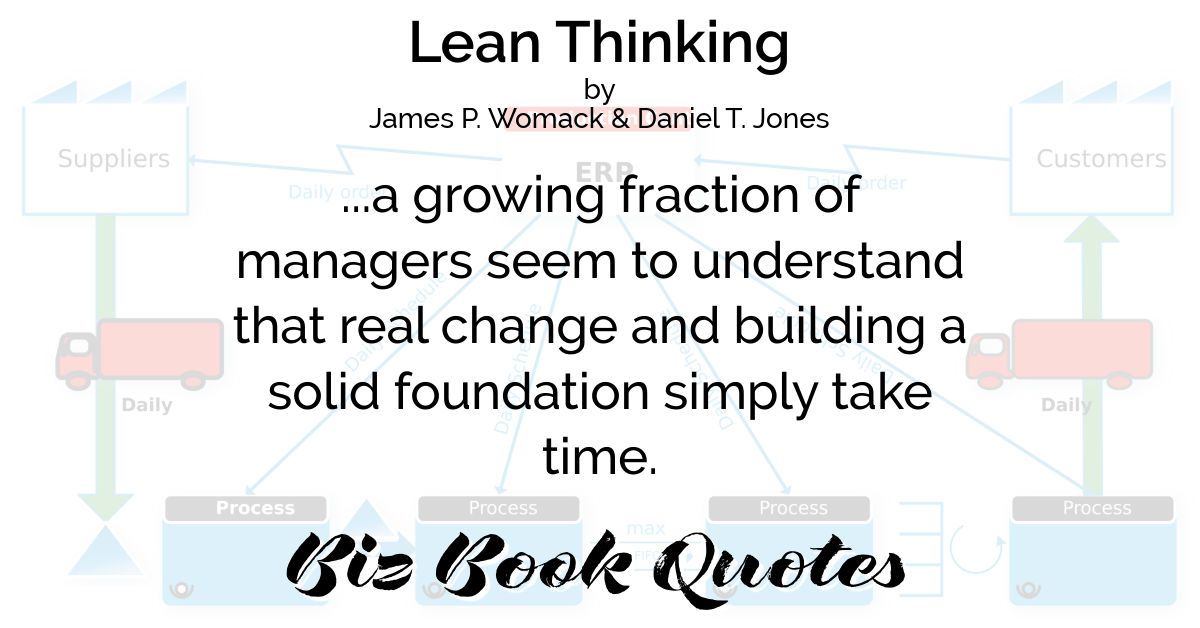
|
Lean Thinking:
…a growing fraction of managers seem to understand that real change and building a solid foundation simply take time.
|
269 |
|
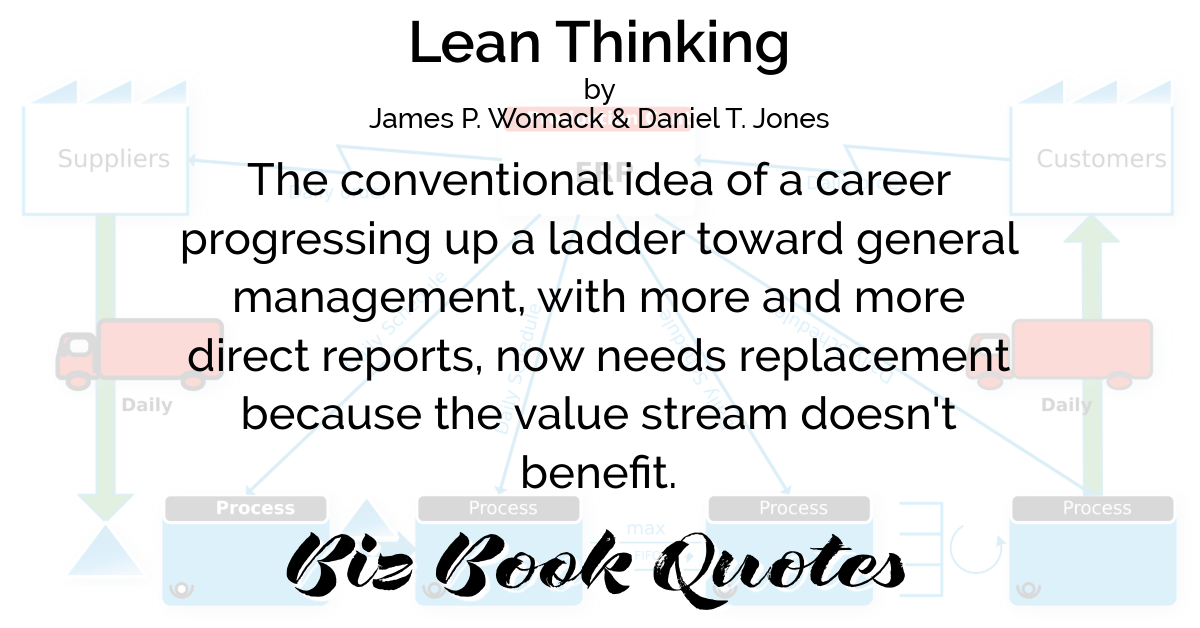
|
Lean Thinking:
The conventional idea of a career progressing up a ladder toward general management, with more and more direct reports, now needs replacement because the value stream doesn’t benefit.
|
279 |











